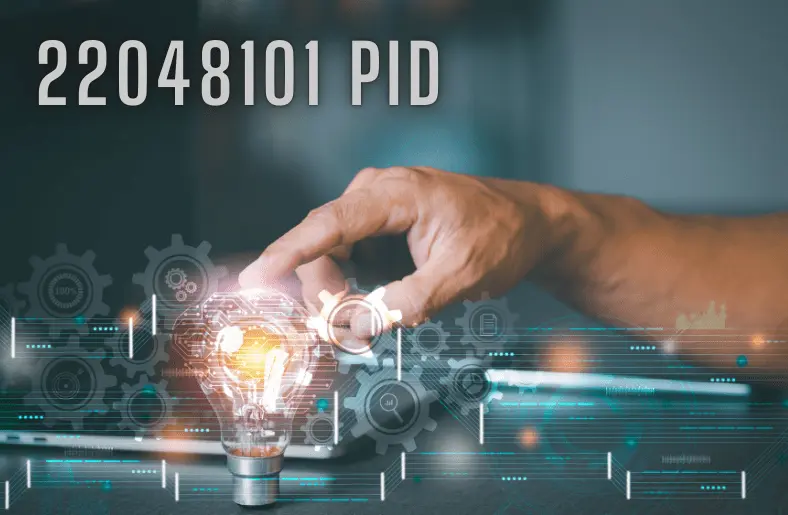The term “22048101 PID” is essential in today’s technological landscape, influencing various sectors and applications. To begin with, this component is pivotal in enhancing control systems, making it indispensable for many industries. Consequently, understanding its functionality and significance helps in grasping the broader impact on efficiency and productivity. Moreover, as we delve deeper, it becomes evident that the evolution of 22048101 PID reflects advancements in technology.
For instance, its integration into modern systems demonstrates its adaptability and relevance. Furthermore, examining future trends will reveal how this technology continues to drive innovation. Overall, recognizing the role of 22048101 PID offers insights into its crucial contribution to current and future technological developments, setting the stage for a more detailed exploration of its applications and benefits.
Understanding 22048101 PID
To comprehend 22048101 PID, it’s essential to start with its core functions. First, this component serves as a critical part of various control systems. Additionally, it plays a key role in improving accuracy and efficiency. By understanding its basic mechanisms, one can appreciate its importance. For instance, the PID algorithm helps in precise adjustments, enhancing system stability. Consequently, this precision directly impacts performance outcomes. Furthermore, 22048101 PID adapts to different applications, showcasing its versatility.
Transitioning from theoretical to practical applications reveals its broad utility. Overall, grasping how 22048101 PID operates lays the groundwork for appreciating its broader implications. In summary, this understanding is fundamental for leveraging its capabilities effectively.
Emerging Trends in 22048101 PID
Emerging trends in 22048101 PID reflect significant advancements. First, automation integration is increasing, enhancing efficiency. Additionally, machine learning is being used to improve its accuracy. Consequently, these trends are driving more precise control systems. For instance, predictive algorithms are now optimizing performance proactively.
Moreover, cloud-based solutions are providing real-time data analysis. This connectivity allows for more responsive adjustments. Furthermore, the rise of IoT technologies is expanding its applications. As a result, PID systems are becoming more versatile.
Transitioning to smart technologies is also notable. This shift ensures better adaptability and integration. Overall, these trends are reshaping how 22048101 PID is used, offering innovative solutions. In conclusion, keeping up with these developments is crucial for leveraging new capabilities.
Innovations Driving the Future
Innovations driving the future of 22048101 PID are transformative. First, advanced algorithms enhance system precision. Consequently, these developments enable more accurate control mechanisms. Additionally, the integration of artificial intelligence is revolutionizing data analysis. This integration offers deeper insights and smarter predictions.
Moreover, developments in sensor technology are improving real-time monitoring. As a result, PID systems are becoming more responsive. Furthermore, advancements in connectivity are enabling seamless integration with other technologies. This connectivity enhances overall system performance.
Transitioning to advanced materials is also notable. These materials improve durability and efficiency. Overall, these innovations are shaping the future of PID systems, making them more efficient and effective. In summary, embracing these cutting-edge advancements is key to future success.
Impact on Industries
The impact of 22048101 PID on industries is substantial. Initially, manufacturing sectors benefit from increased precision. Consequently, production processes are more efficient. Similarly, the automotive industry sees advancements in automation. Vehicle safety and performance are enhanced as a result.
Moreover, in the aerospace sector, PID systems enhance flight control. Thus, aircraft operations become more reliable. Additionally, the energy sector experiences better energy management. This improvement leads to reduced costs and increased sustainability. Furthermore, PID systems support innovations in robotics.
As a result, robotic operations are more accurate and versatile. Overall, the influence of 22048101 PID is widespread. It transforms various industries by enhancing efficiency, accuracy, and reliability. Hence, its impact is both significant and far-reaching.
Challenges and Considerations
Challenges and considerations with 22048101 PID are numerous. First, integrating this system can be complex. Consequently, it requires thorough planning and technical expertise. Additionally, there are concerns about cost. Hence, businesses must evaluate the financial impact carefully.
Moreover, system compatibility issues may arise. Thus, ensuring seamless integration with existing technology is crucial. Transitioning to new systems may also disrupt operations temporarily. As a result, companies should plan for potential downtimes. Furthermore, maintaining and updating the system can be challenging. Therefore, ongoing support and training are essential.
Lastly, data security is a critical consideration. Thus, implementing robust security measures is necessary to protect sensitive information. Overall, addressing these challenges effectively is key to leveraging PID benefits.
Looking Ahead
Looking ahead, the future of 22048101 PID is promising. First, advancements in technology will drive innovation. Consequently, we can expect more sophisticated features and enhanced performance. Furthermore, emerging trends will likely shape its development. As a result, new applications and uses will emerge. Additionally, the integration of AI and machine learning could revolutionize its capabilities. Thus, users will benefit from increased efficiency and accuracy.
Moreover, continuous improvements will address current challenges. Therefore, future iterations will offer better solutions and reduced costs. Also, collaboration between industries will foster innovation. Consequently, we can anticipate exciting breakthroughs in PID technology. In conclusion, staying informed about these trends is crucial. Thus, businesses and users should remain adaptable and proactive.
Also Read: Kellogg Innovation Network
Conclusion
In conclusion, 22048101 PID represents a significant advancement. To summarize, it integrates emerging trends and innovations effectively. Moreover, its impact across various industries is notable. Additionally, challenges and considerations must be addressed for successful implementation. Thus, understanding its future potential is crucial. Furthermore, staying updated on advancements ensures better preparedness. Consequently, leveraging these insights can lead to substantial benefits. Therefore, adapting to new developments will be key. Ultimately, the evolving landscape of 22048101 PID promises exciting opportunities. To maximize its potential, continuous learning and adaptation are essential. Thus, embracing these changes will drive success and innovation.




